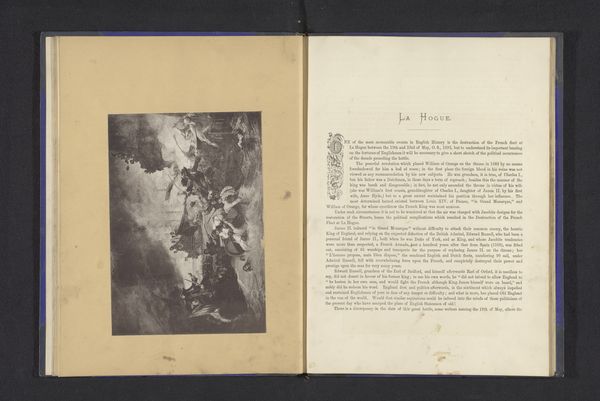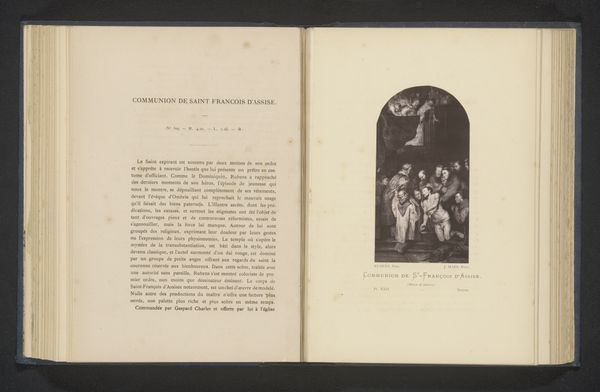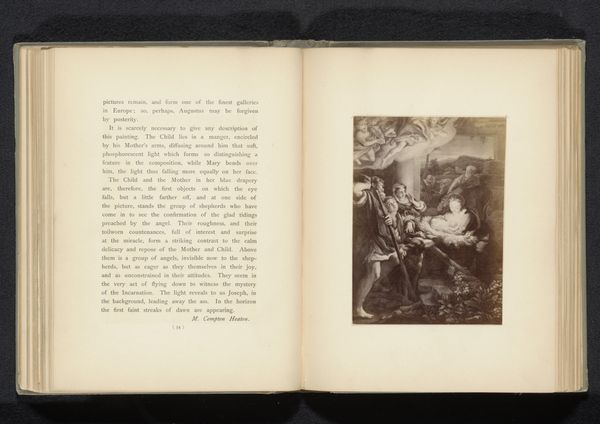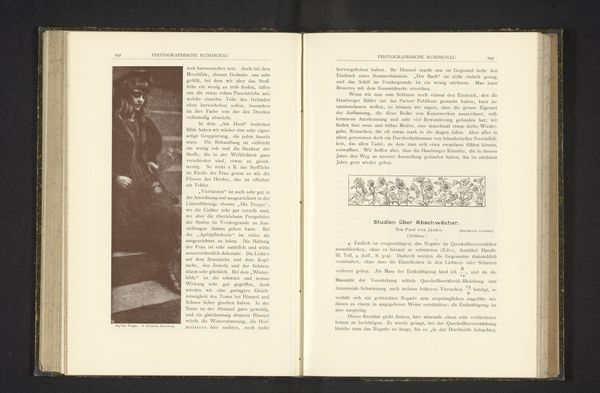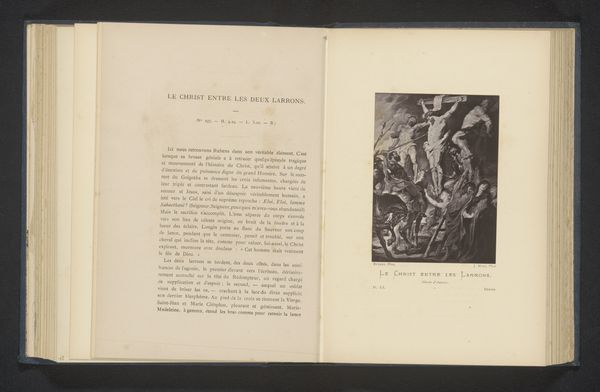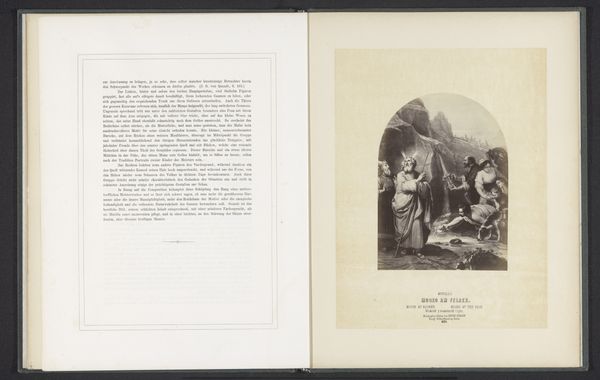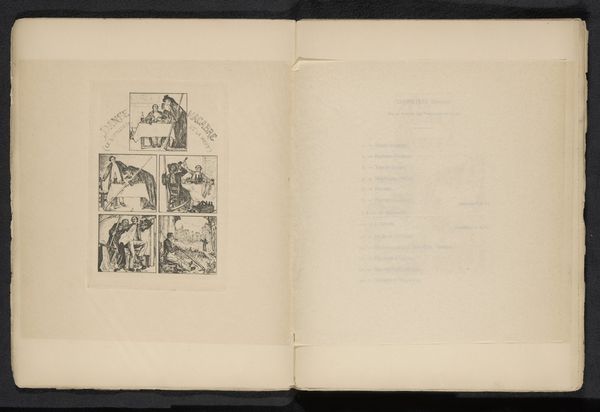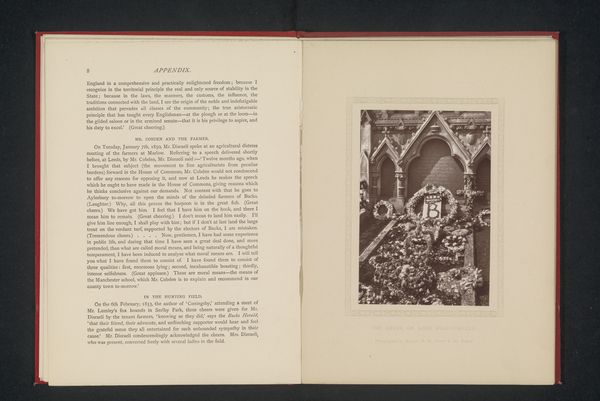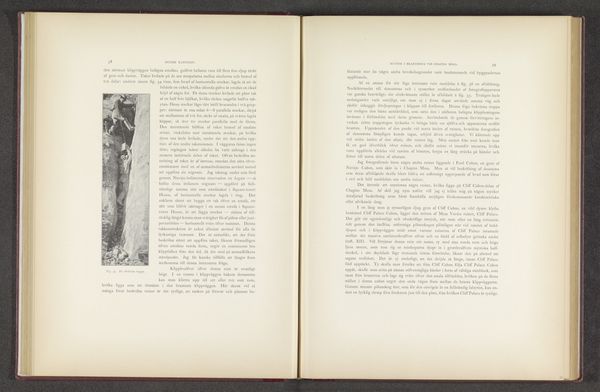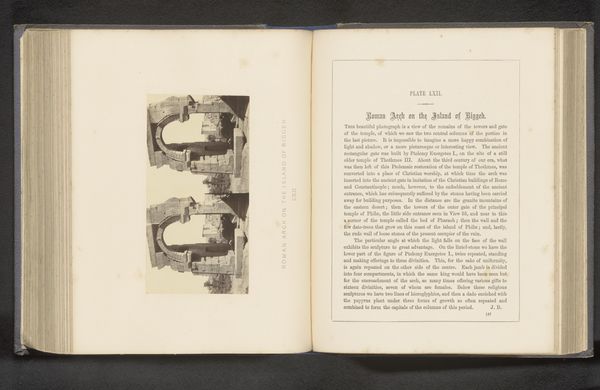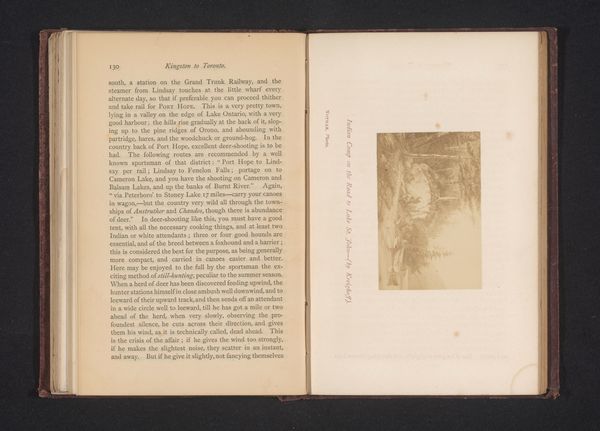
print, photography
#
portrait
# print
#
photography
#
history-painting
#
italian-renaissance
Dimensions: height 267 mm, width 201 mm
Copyright: Rijks Museum: Open Domain
Curator: This image offers us a glimpse into the dissemination of artistic masterpieces in the late 19th century. What we have here is a photographic reproduction, specifically a print, of a detail from Raphael's famed "Sixtine Madonna." We can date this reproduction to before 1895. Editor: It's interesting to see this captured through photography; the tonality is moody, almost ethereal, which somehow gives a different, less formal feel to the scene, despite it being a detail from such a revered Renaissance piece. Curator: Absolutely, and I think that speaks volumes about the consumption of art during that era. This wouldn't have been mass-produced in the way we think of art reproductions today; rather, photography provided a relatively accessible way to own a piece, or at least a likeness, of high art, shaping public perception. Think of the role these prints might have played in art education, or domestic display! Editor: And beyond domestic use, how did accessibility reshape class divisions and influence emerging artists and art movements? If an artist can have access to old art in a photo versus in reality, doesn't that impact how they may translate their vision to future mediums? Curator: Precisely! The reproduction of artwork inevitably detaches itself from its original context and craftsmanship, creating new avenues for artistic experimentation by enabling greater freedom through technological distribution. The act of copying isn't just imitation; it's the creation of something new, and opens art to a potentially new and much broader audience than it might have originally received in Italy. Editor: In this way, reproductions democratized access but perhaps altered artistic labor. Photography would eventually allow people to question art values, high art versus reproduction... Curator: Indeed, thinking of Walter Benjamin's insights, you could argue the mechanical reproduction transforms our experience with artwork, impacting its aura. Here, the very medium shifts our connection from sacred icon to readily available commodity, highlighting our shifting understanding of consumption. Editor: Ultimately, it provides a fascinating window into a critical moment when access to artistic imagery shifted so profoundly, and started to move to new channels that we take for granted today.
Comments
No comments
Be the first to comment and join the conversation on the ultimate creative platform.
